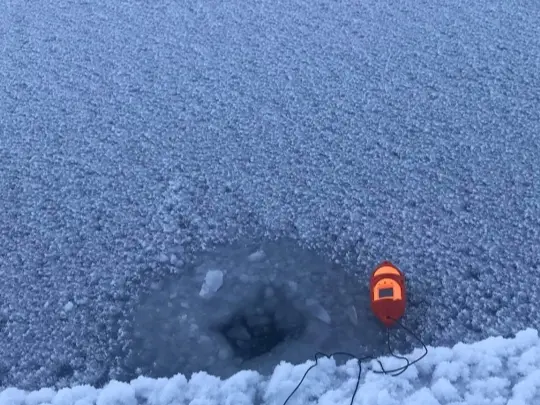
Sikuliaq - Thin Young Ice
Indigenous Knowledge
Sikuliak ᓯᑯᓕᐊᒃ 'Ice has thickened enough so that you can travel on it, although still very thin and can be wavy from water motion underneath' (Sanikiluaq, Nunavimmiutitut, Sanikiluaq Siku Terminology Workshop)
Sikuliaq ᓯᑯᓕᐊᖅ 'When the ice is frozen, but it is still flexible and moves with travel, it is sikuliaq (estimated at approximately 1 – 1 ½ inches, it is possible to walk on but not drive on).' (Iglulik, North Qikiqtaaluk, Inuit Siku Atlas)
Hikuliaq 'young ice' (Ulukhaktok, Kangiryuarmiutun, (source 1) Kudlak and Compton 2018: 41; (source 2) Lowe 1983: 38)
Siguliaq ‘Young ice, gray or gray-white in color’ (Kiŋigin (Wales), Weyapuk Jr. and Krupnik 2012: 19)
Western Knowledge
Nilas Ice ‘A thin elastic crust of ice, easily bending on waves and swell and under pressure growing in a pattern of interlocking "fingers" (finger rafting). Nilas has a matte surface and is up to 10 centimetres in thickness and may be subdivided into dark nilas and light nilas.’
Young Ice 'Ice in the transition stage between nilas and first-year ice, 10-30 centimetres in thickness. May be subdivided into grey ice and grey-white ice.'
Grey Ice 'Young ice 10-15 centimetres thick, less elastic than nilas and breaks on swell. It usually rafts under pressure.'
Grey-White Ice 'Young ice 15-30 centimetres thick. Under pressure it is more likely to ridge than to raft.'
Source: MANICE
.svg)